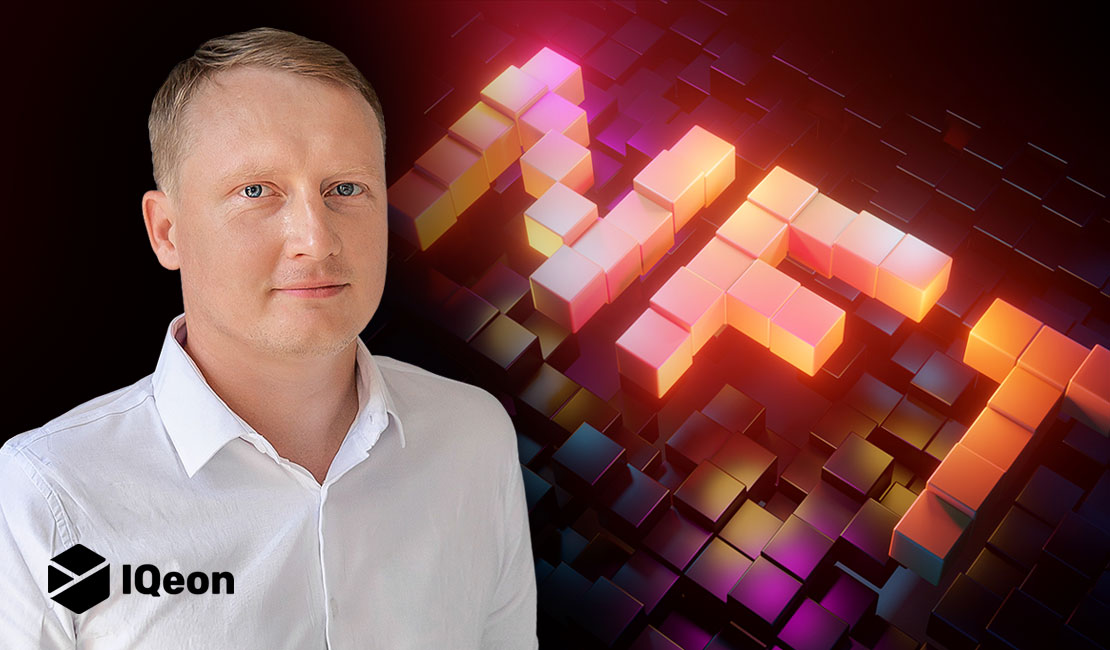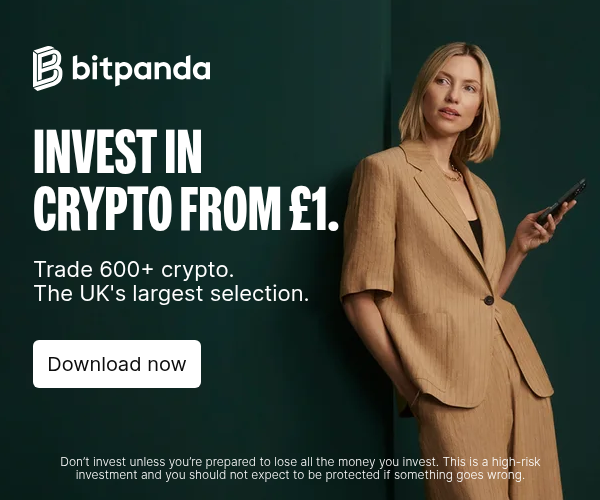
Non-fungible tokens (NFT) are one of the biggest technology trends of our time. Almost every day we come across headlines that another digitized piece of art has been sold for 5, 10, or 15 million dollars! The high price tag has become an incentive for the creative community development: netizens strive to repeat the success of artists, musicians, and ordinary crypto enthusiasts who even sell memes and avatars for huge sums.
Chief Legal Officer of the IQeon project Alexander Paramonov shares his opinion on the hot crypto-topic.
– In 2021, $70 million worth of non-fungible tokens were sold every week, and the average price was around $3,000. Why are NFTs so expensive?
– It is rather difficult to answer the question of why non-fungible tokens are so pricy because the NFT industry is now drawn in the hype. Originally it was CryptoKitties that triggered the popularization of these tokens. So projects that provide the right to own some object have existed for a long time, but the term NFT has become ubiquitous only now. The NFT revival in 2021 is associated with progress in the crypto ecosystem. The emergence of more NFT services, amateur traders, and enthusiastic investors, as well as the hype in the digital asset market, did the business. The infoglut also played a certain role in the popularity of NFT – when such celebrities as Elon Musk, Banksy, Lindsay Lohan started talking about them, it was impossible to ignore this technology.
– How does the NFT technology guarantee digital ownership for the creators?
– The guarantee is regulated by a smart contract, which is drawn up according to certain standards. Non-fungible tokens are assets of the ERC-721 standard, the smart contract code of which specifies a link to a unique object as metadata. Moreover, the object can be stored both on centralized and decentralized servers.
Currently, the purchase of NFT is not legally regulated and doesn’t provide owners with such basic intellectual property rights, such as, for example, a ban on the use of the work by third parties. At the same time, from a legal point of view, the author or seller of NFT is not deprived of the rights to the original object, for example, a painting. This means that nothing prevents him from distributing copies of the original work after the sale. In fact, the purchase of NFT is a transaction between the author and the buyer, where the transfer of rights to a certain object is recorded digitally. However, compliance with the terms of such a transaction depends largely on the author of the original work.
– But in this case, what prevents another person from simply copying any object on the Internet and passing it off as his own?
– In fact, nothing. But when it’s time to sell it, NFT proves who is the sole owner of the property. Van Gogh's Starry Night, for example. Anyone can search for an image on Google, print and hang it at home. But if the owner wants to sell the painting, he will have to prove that he is the owner of the original, which is in a New York museum.
However, this state of affairs cannot be permanent. I expect that the regulators of the leading countries will soon make attempts to regulate the NFT turnover in order to protect the buyer from the dishonesty of the author and others involved in transactions with non-fungible tokens.
At the moment, a class of semi-fungible, or partially fungible, tokens is also developing as the next stage of the NFT idea. A semi-fungible asset allows a token to be fungible in some cases and non-fungible in others, such as the ERC-1155 and ERC-1410 standards. However, such hybrid solutions, embodied in semi-fungible tokens, are rather a separate asset class that occupies a niche between regular tokens and NFTs.
– The vast majority of NFTs are issued on the Ethereum blockchain where the two main issues are said to be scalability and high gas fees. What other potential alternatives to Ethereum exist for NFTs and can they improve on the existing tech?
– There are blockchains that add the functionality of writing smart contracts, but you still need to pay for gas. This is controlled by the distributed ledger technology itself.
The market has also developed a Directed Acyclic Graph solution or DAG blockchain. Its essence lies in the absence of intermediaries (miners) and direct access to the registry for each member of the network. That is, when you want to add a transaction to the registry, you simply do this: select several parent transactions, add your data, sign and send your transaction to the network. However, this technology also has its drawbacks. DAG works best with high transaction volumes, and reducing the number of deals can make it vulnerable to attack. This means that DAG is not as secure as traditional blockchain.
Many enthusiasts also promote Flow blockchain launched in 2020 – the crypto community calls it a potential alternative to Ethereum. It supports entire ecosystems of apps, especially those related to games and digital collectibles. However, for all its merits, Flow didn’t receive such support as the Ethereum ecosystem. And this is perhaps the main answer to the question of whether Ethereum has alternatives for the NFT market. While Ethereum has such a powerful and loyal audience, it’s difficult for other projects to gain momentum and become a cool replacement for Ethereum.
– NFT's could be a huge game-changer for the online creative community, which has been said to be marginalized and underpaid for many years. Do you see NFTs as a revolution in the way digital ownership works?
– Non-fungible tokens have real use cases where this concept can potentially benefit. Ticket sales, for example – NFTs can help you get rid of speculative resale. Tokens can also be used to track the supply chain from manufacturer to end consumer, making the price creation process transparent. A potentially winning option for using NFT can be confirmation of the document's uniqueness, personal identification, protection of voting results, confirmation of rights to intellectual property and real estate, educational diplomas and contracts, which will eliminate the risk of forgery and save time on bureaucratic procedures. And the list of ideas for using NFT doesn’t end there. However, we will be able to find out how useful the functionality of non-fungible tokens is a bit later.
You need to understand that the hype around NFT technology is not revolutionizing the art, collecting industry, or property. Indeed, with the help of these tokens, crypto enthusiasts don’t buy copyrights, but only licensed content. If someone acquires an NFT for a digital object, everyone else can still view and share it with each other.
– How do you think, can NFT tokens become mainstream?
– It is difficult to predict the future for NFT. If technology can prove to be of real value to customers, then it will evolve. But at the moment this is a hype area where a screenshot of Jack Dorsey's tweet is selling for almost $3 million.
NFT now offers another innovative, high-tech toolkit for protecting sensitive data, and it’s rather difficult to predict how successfully society, business, and government regulators will be able to implement it in a practical field.
– Do you believe crypto investors might migrate to NFT in search of better returns?
– NFT shouldn’t be perceived as a protective tool for a cryptocurrency portfolio, as non-fungible tokens are one of the youngest and high-riskiest market sectors. Hypothetically, the owner of the artwork in the form of an NFT can resell it with profit. However, this is the most painful question about NFT. Digital objects are bought/sold for ETH. But after all, the price of an altcoin, like all digital assets, is very volatile, and no one knows whether the cost of work will be based on its real value or depend on the ETH price.
NFT is valuable for collectors and art lovers, but for the average investor, non-fungible tokens are unlikely to be of great interest, while their prospects are clouded.
– There has been a heavy influx of DeFi investments into gaming since the multi-billion dollar gaming industry is expected to reach a valuation of $256 billion by 2025. With an average of 2 billion+ gamers worldwide, various gaming companies are expanding their development to include blockchain technology into their games. This is where the talk of NFT collectibles comes into the picture. Do you believe more games will eventually allow for such tokenization of their in-game commodities?
– Centralized games already have a mechanism that allows you to link property to a user's account. Does it make sense for developers to make the same system in a decentralized form? Adding tokenized means of payment to applications will be blocked by marketplaces through which game creators control the financial flows of their profits. It’s simply not profitable for them.
If we are talking about blockchain games, then most of them are tied to the native currency. For example, The Sandbox uses the SAND token, Decentraland uses MANA, and the IQeon platform uses IQN. It makes sense for such websites to promote their games and native tokens.
– IQeon introduces itself as a PvP gaming platform that helps players monetize their in-game achievements. Could you tell us more about how IQeon achieves this and what kind of games it works with?
– About 20 games of various genres are presented on IQeon.com platform: races, shooters, casual games, and arcades. Simply put, everyone's favorite classic. As soon as a user registers on the platform, he gets access to free PvP matches, as well as games that provide an opportunity to win the internal IQN currency. In the latter case, the user clicks “Play" button and indicates the amount of IQN that he is ready to contribute to the match, after that he chooses the number of opponents and begins to fight for the prize pool. The winner takes all.
– IQN is showing steady growth, especially since March last year, when its price increased by 200%. Tell us about the usefulness of the token.
– IQN token is a product that may be of interest to both crypto investors and non-professional gamers. And for the latter in particular, because today the issue of gaming success monetization is very acute. Developers of centralized games don’t care much about how much time and effort the user spent on completing the game; they are only concerned with their own profit. IQN is trying to change the state of affairs by providing an opportunity to quickly and easily receive assets for in-game achievements.
Moreover, IQN can be viewed as a protective asset for a crypto portfolio. According to the three-month metric, the token is almost always (with minor adjustments) in the green zone and is steadily growing 25–30% every 90 days. This is due to the fact that IQN is actively integrating into the listings of popular crypto exchanges and well-known services for traders, as well as strengthening its position in the information space, attracting more and more crypto enthusiasts.
– Talk to us about how IQeon as a company looks at the gaming industry at the moment. Does your team believe that blockchain technology can lead us to next-gen games? What is the future of gaming according to IQeon?
– The pandemic triggered almost avalanche-like growth in the gaming market – more and more people began to spend time playing games. At the same time, many enthusiasts and even large corporations are turning to blockchain technology. This forms a very useful symbiosis of games and a distributed ledger, the main idea of which is to take power from gaming companies and return it to the players.
However, taking into account all its potential, this industry has not yet gained strong support from the traditional gaming community. This is largely due to fear and misunderstanding of how blockchain technology works. Distributed games will remain a rather risky decision as long as the crypto literacy is at a low level. Only with the advent of an increasing number of training services and well-developed blockchain solutions can the crypto games industry reach a ringing success.





 usdt
usdt bnb
bnb

